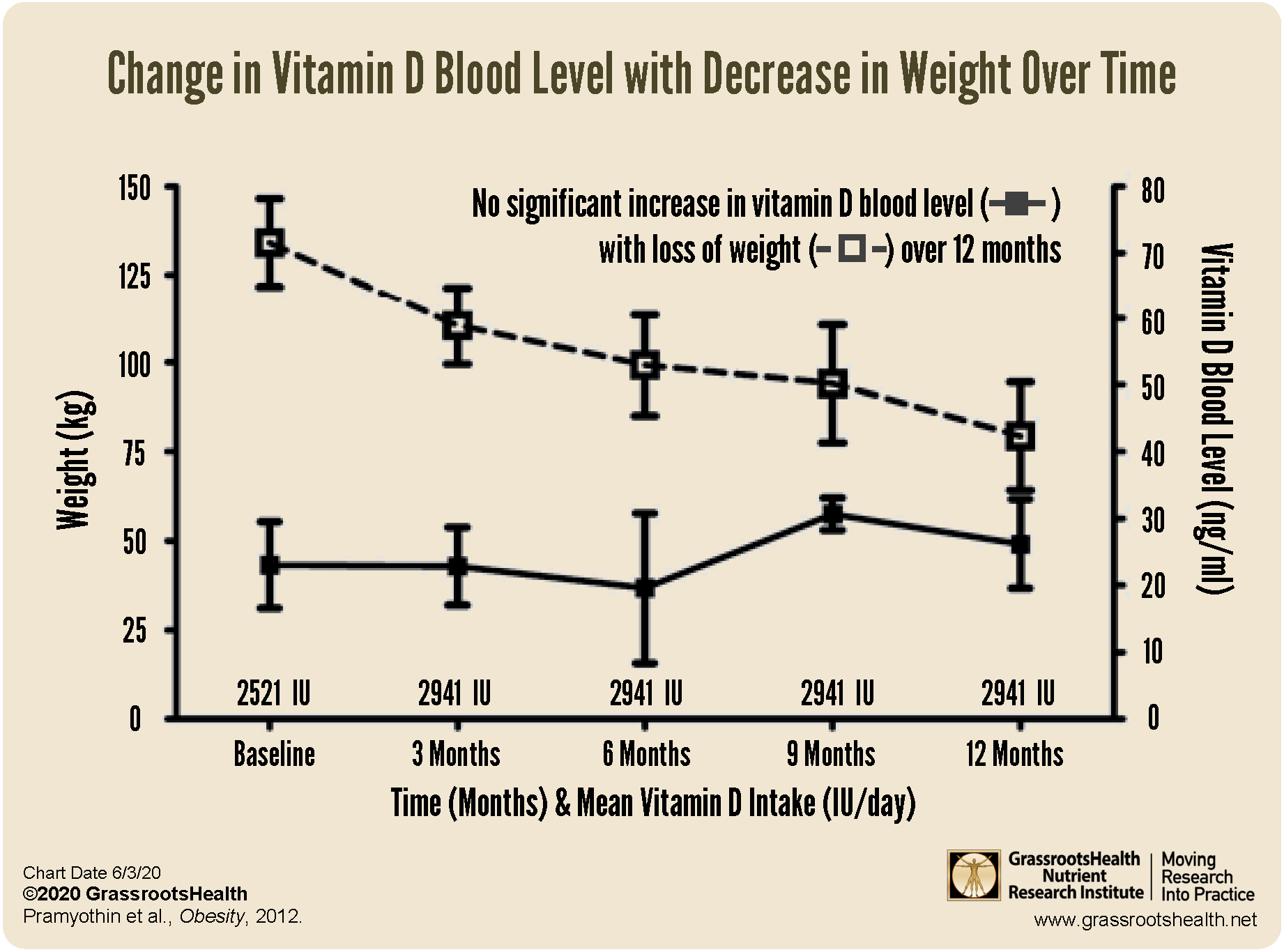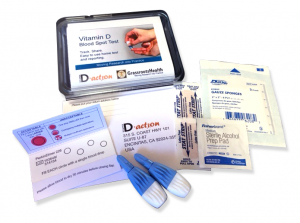Published on June 5, 2020
Yesterday, we addressed our first vitamin D myth – that, being fat soluble, vitamin D can be stored in our fat cells for later use. We have heard concerns that supplementation with vitamin D is not needed, or even safe, because of this. While it is true that vitamin D has a higher affinity for fat, the ratio of vitamin D in fat to blood is relatively constant, and the body does not rely on vitamin D in fat to increase vitamin D blood levels. Nor is it possible to get vitamin D3 itself without regular intake from supplements or food, or from proper sun exposure.
Toxic Vitamin D in Fat?
 Since vitamin D has a higher affinity for fat, some have speculated that vitamin D can build-up in our body fat over time and become toxic. Hopefully, our last post helped put that thought to rest, by demonstrating the constant ratio of vitamin D in fat to blood.
Since vitamin D has a higher affinity for fat, some have speculated that vitamin D can build-up in our body fat over time and become toxic. Hopefully, our last post helped put that thought to rest, by demonstrating the constant ratio of vitamin D in fat to blood.
Additionally, the question has been raised that individuals who are overweight and obese might be at particular risk when taking vitamin D supplements of vitamin D toxicity if they lose a large amount of weight in a short period of time. Yet, this is simply not true. Overweight and obese individuals are one of the most at-risk groups for vitamin D deficiency and associated health problems. In fact, they typically need 2 to 3 times the amount of vitamin D intake as do people in the normal body mass index range. Rather than worrying about toxicity, the more appropriate concern would be about deficiency.
Today’s post adds additional evidence to dispel the myth that vitamin D stored in fat can lead to toxicity.
Here for a good time, not a long time
Vitamin D build-up in body fat does not continue indefinitely. When there is a continuous supply of vitamin D, a balance is reached between the vitamin D stored within our body fat and its removal for use into the blood stream.
In a review of vitamin D storage in pig tissues Dr. Robert Heaney and colleagues from Creighton University discovered that groups with vitamin D blood levels near 36 ng/ml (90 nmol/L) use up their vitamin D just as fast as they are getting it. In fact, pigs given feed with over 2,000 IU/d only had a 7 to 12 day supply of vitamin D in their body. This means that they are using the vitamin D as they get it – there is ongoing turnover and essentially no storage occurring.
In cases of adequate vitamin D intake, some gets stored in body fat, but this breaks down over time. It is not stored indefinitely.
False Flood Alarm
Suggestions that rapid fat loss could result in a sudden flood of vitamin D – or any other fat soluble vitamin for that matter – into the bloodstream are also unsupported.
A 2013 study by Piccolo et al. centered on overweight participants in a weight-loss program found no change in vitamin D blood levels after an average total fat loss of 13%. Weight loss did not change vitamin D levels.
Studies on weight loss surgery also show that vitamin D is not rapidly released from the fatty tissues. The chart above, from a 2012 study by members of Boston University School of Medicine, shows the vitamin D blood level of 17 subjects who were followed for an entire year after undergoing a weight loss procedure. After a year the average weight loss was 130 lbs and 90 lbs of fat. As can be seen, there was no increase in vitamin D blood levels despite such a dramatic loss of fat.
Clearly, vitamin D in your body fat does not lead to high levels of vitamin D in your blood after dramatic weight loss.
What doses of vitamin D can be considered safe?
“Normal” vitamin D levels are those that you can attain naturally through sun exposure. The best evidence for normal levels comes from native groups at the equator (can make vitamin D all year) and living a traditional lifestyle (plenty of time outdoors and they don’t wear sunscreen). Their blood levels of vitamin D are around 46 ng/ml (115 nmol/L).
While the current guidelines set by the U.S. National Academy of Medicine (formerly the Institute of Medicine) recommend 600 IU/day of vitamin D, with an upper limit of 4,000 IU/d, this is not enough for many to reach the levels suggested above.
Is there additional concern for toxicity when supplementing with more than 600 or 4000 IU/day of vitamin D? When should you be concerned? Stay tuned and find out!
Is it True?
Our goal with this “Vitamin D Myths” series is to provide information and resources to answer the question, “Why should I care about vitamin D?” and to help dispel the myths and misconceptions surrounding it that may be preventing you and others from accepting it as an essential component to health. We will also discuss other nutrients essential to the function of vitamin D (and vice versa) within the body that should not be ignored.
Vitamin D is necessary for multiple functions within the body and should not be ignored, but has the hype about vitamin D and its role in the body’s response to COVID-19 been over-exaggerated? What concerns about vitamin D are valid, and which are not? We want to provide you with evidence-based information to help you decide what vitamin D action to take, if any, for your own health.
We want to hear from you!
Is there a particular ‘myth’ you have heard about vitamin D? Or, something you have read or been told that makes you question whether vitamin D ‘deserves’ so much attention? Or whether you should be taking it and how much? Share with us by emailing jen @grassrootshealth.org what you have heard that makes you question vitamin D so that we can consider addressing it in our newsletters.
Do you know your nutrient status?
Do you need to be concerned about getting more vitamin D or other essential nutrients, such as magnesium, omega-3s and zinc? Test today and take the necessary steps to ensure your body has enough of each to support daily health!
Through GrassrootsHealth Nutrient Research Institute, you can also test your essential elements magnesium, copper, zinc and selenium, toxins such as lead, mercury and cadmium, as well as your omega-3 levels, inflammation levels and thyroid stimulating hormone (TSH) level. Find out your levels today! Log on to the test selection page (click the link below) to get your tests and see for yourself if your levels can be improved.
Make sure you track your results before and after, about every 6 months!
How can I track my nutrient intake and levels over time?
To help you track your supplement use and nutrient levels, GrassrootsHealth has created the Personal Health Nutrient Decision System called
For each specific supplement, you can track what days you take it, how much, and many other details. This will help you know your true supplemental intake and what patterns of use work for you to reach and maintain optimum nutrient levels. Check it out today!








